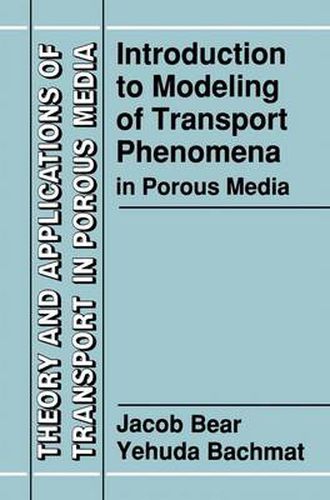Introduction to Modeling of Transport Phenomena in Porous Media
Jacob Bear,Y. Bachmat

Introduction to Modeling of Transport Phenomena in Porous Media
Jacob Bear,Y. Bachmat
This title is printed to order. This book may have been self-published. If so, we cannot guarantee the quality of the content. In the main most books will have gone through the editing process however some may not. We therefore suggest that you be aware of this before ordering this book. If in doubt check either the author or publisher’s details as we are unable to accept any returns unless they are faulty. Please contact us if you have any questions.
The main purpose of this book is to provide the theoretical background to engineers and scientists engaged in modeling transport phenomena in porous media, in connection with various engineering projects, and to serve as a text for senior and graduate courses on transport phenomena in porous media. Such courses are taught in various disciplines, e. g. , civil engineering, chemical engineering, reservoir engineering, agricultural engineering and soil science. In these disciplines, problems are encountered in which various extensive quantities, e. g. , mass and heat, are transported through a porous material domain. Often the porous material contains several fluid phases, and the various extensive quantities are transported simultaneously throughout the multiphase system. In all these disciplines, management decisions related to a system’s development and its operation have to be made. To do so, the ‘manager’, or the planner, needs a tool that will enable him to forecast the response of the system to the implementation of proposed management schemes. This forecast takes the form of spatial and temporal distributions of variables that describe the future state of the considered system. Pressure, stress, strain, density, velocity, solute concentration, temperature, etc. , for each phase in the system, and sometime for a component of a phase, may serve as examples of state variables. The tool that enables the required predictions is the model. A model may be defined as a simplified version of the real (porous medium) system that approximately simulates the excitation-response relations of the latter.
This item is not currently in-stock. It can be ordered online and is expected to ship in 7-14 days
Our stock data is updated periodically, and availability may change throughout the day for in-demand items. Please call the relevant shop for the most current stock information. Prices are subject to change without notice.
Sign in or become a Readings Member to add this title to a wishlist.

